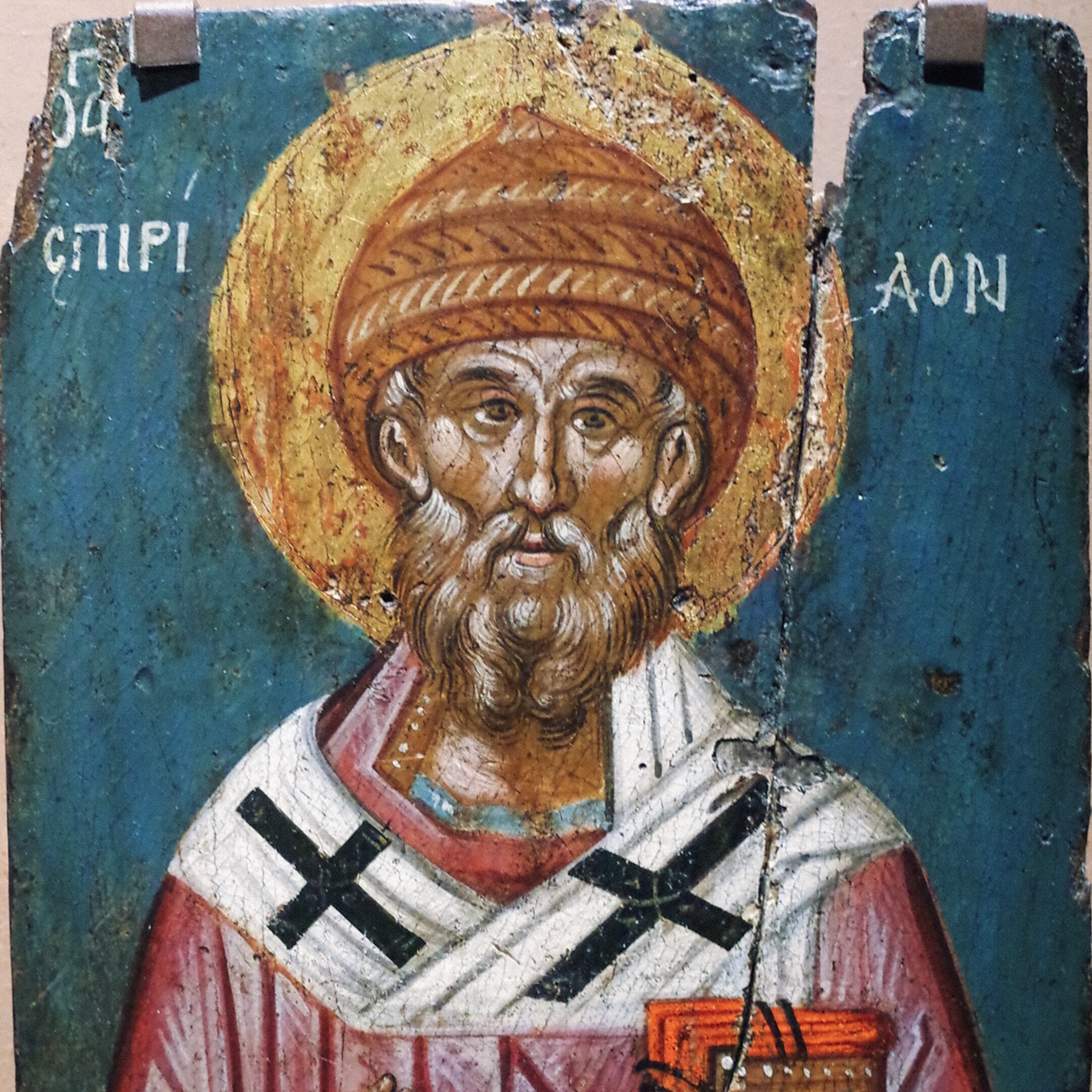Sari Saltuk alias Saint Spyridon
Religious Pluralism, Shared Sacred Sites in the Indian Subcontinent and the Balkans
Ethnographic fieldwork in Albania. March 2012 and August 2019 | Conducted within the framework of the research project ‘The Visual and Material Culture of Sufism in Central and Southeastern Europe’ | Outcome: 3 conference papers, 1 peer-reviewed book chapter, and 1 peer-reviewed journal article/1 book chapter [forthcoming]
The interior of the mekam (Arabic maqam; place where a saint resides) near Kruja which shelters the sacred footprint, which Sari Saltuk left behind during his miraculous crossing to Corfu, is sparsely decorated. A wall carpet depicting the bust of ʿAli b. Abi Talib with his Dhuʾl-faqar (lit. ‘provided with notches, grooves’—ʿAli’s double-bladed ‘miraculous’ sword) hangs above a niche that contains some candles, plastic flowers, and a small golden frame that serve to sacralize and domesticate the space. The frame holds the only non-modern visual depiction of Sari Saltuk known to me. The black and white print pre-dates the Communist period, making it about seventy years old. It is probably on account of the saint’s trickster-like elusiveness that there are no historical visual depictions. In spite of his tremendous popularity, he remains both marginal and liminal: marginal within the more normative or ‘orthodox’ Islamic religious tradition and liminal in the sense that he is an uncanny thaumaturge of popular tradition who was never fully ‘domesticated.’
In the nineteenth century, many Albanians made the pilgrimage to the church of St. Spyridon in Corfu to worship the patron saint of the island as Sari Saltuk. The identification of St. Spyridon of Corfu with Sari Saltuk probably solidified, in part at least, due to the policies of ʿAli Pasha of Tepelena, the ambitious and quasi-independent governor of Yannina, who ruled from 1788 to 1822, during which time he sought to acquire the Ionian Islands. Both the miraculous preservation and incorruptibility of Spyridon’s body, symbolizing his immortality, and the fact that it contained a sprig of basil, the ‘royal plant,’ were taken as signs of his sanctity and assured the regular veneration of his physical remains (reliquiae). It is particularly significant that his cult involves the veneration of his feet. As a ‘walking saint,’ he receives shoes as gifts because he is said to wear out the slippers (otherwise preserved inside his reliquary) while he is out performing miracles. Because they wear down over time, like any pair of shoes, they must be replaced about once every year. One of the most popular miracle-working saints today, his relics, which have stayed on Corfu for over five hundred years, are believed to have a potent apotropaic and salvific function, protecting the island from conquest and plague. If we take a closer look at the small poster of Sari Saltuk preserved at the mekam that shelters the impression of his foot in the forest between Kruja and Fushkruja, we see that it is, in fact, a print that depicts St. Spyridon.
The latter is clearly recognizable through the visual vocabulary encoded in attributes such as his shepherd’s hat. Obvious Christian markers, such as crosses, have been omitted, redefining the print’s potential agency. We witness a representational shift in the context of devotional and therapeutic practice, which moves beyond mimetic representation to become a syncretic reality with affective powers for its intended audience. While not completely coinciding with Christian imagery, the force of this agency derives from the resemblance to, imitation of, and identification with the particular quality of the ‘other’. As a worker of miracles and a trickster, Sari Saltuk is eminently suited for this kind of free translation. The ‘adapted’ print is ritually equal to the prototype and retains not only the latter’s potency, but is additionally charged with Sari Saltuk’s blessing (bereket; Arabic baraka).
Excerpt from “A Saint ‘on the Move’: Traces in the Evolution of a Landscape of Religious Memory in the Balkans,” in: Saintly Spheres and Islamic Landscapes: Emplacements of Spiritual Power across Time and Place, eds D. Ephrat, E.S. Wolper, P.G. Pinto (Brill Handbook of Oriental Studies 147, Leiden: Brill 2020), 117–148, here 139–142



